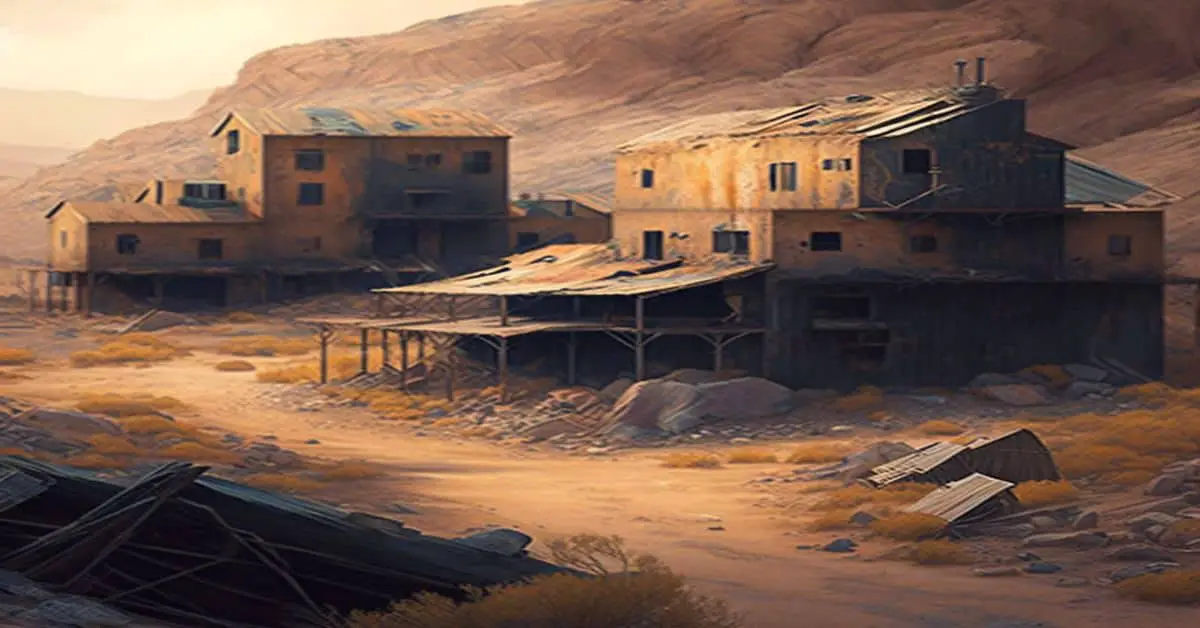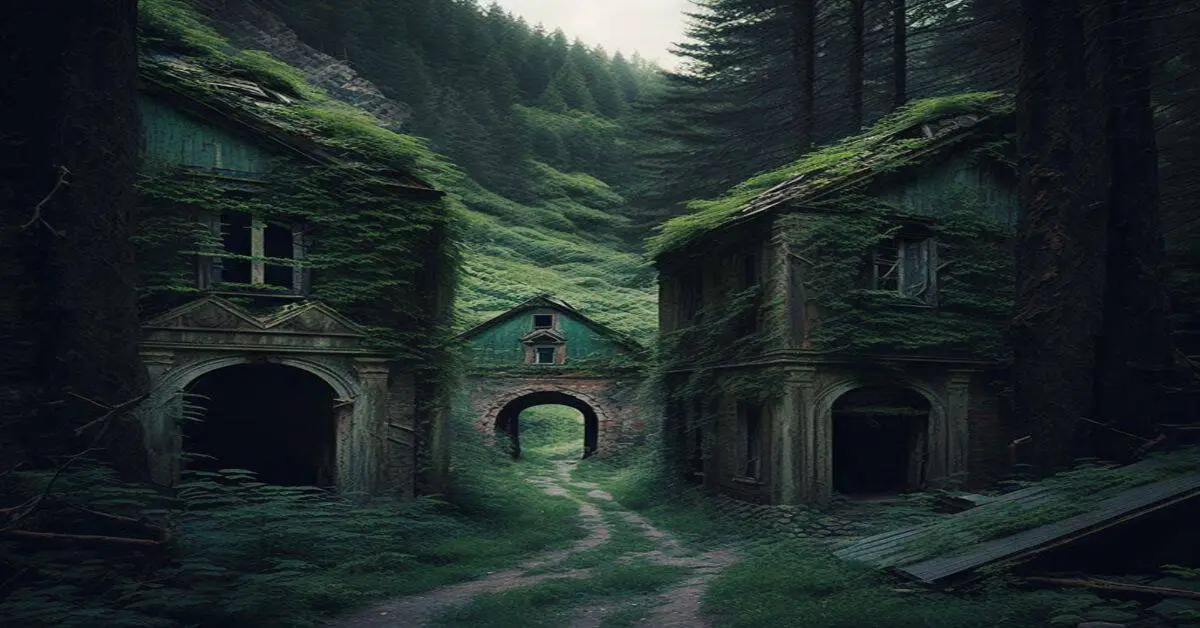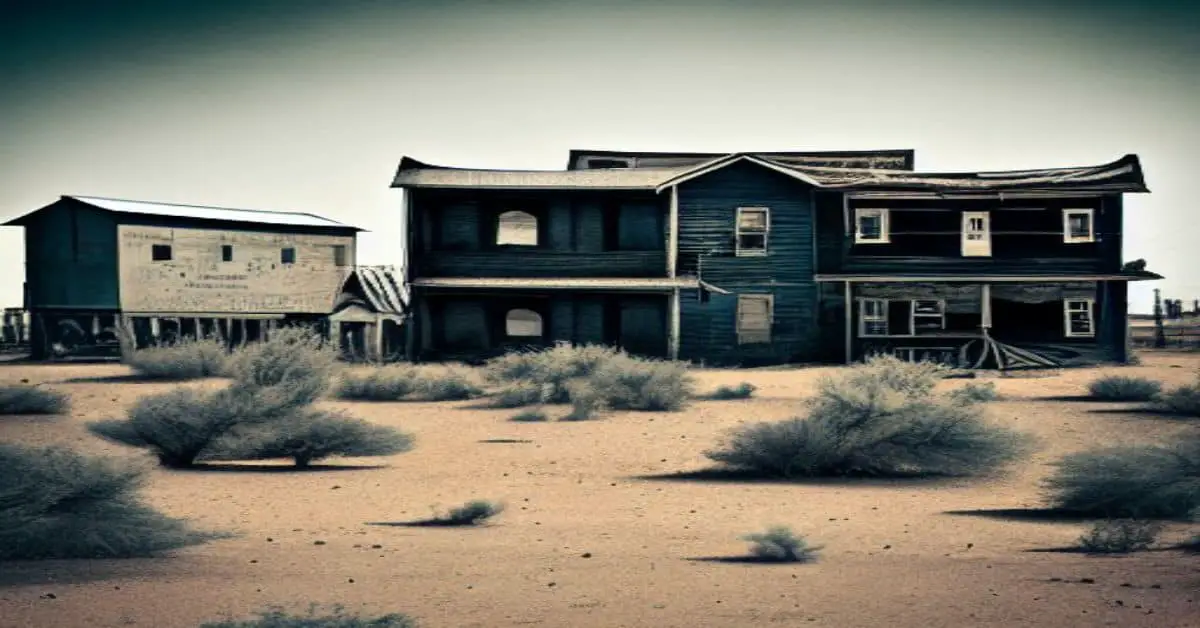Nestled in a canyon near Gunnison, Colorado, lies the ghost town of Floresta. Once a thriving coal mining town and shipping hub, it now stands abandoned, a haunting reminder of Colorado’s mining history. Despite its desolate state, Floresta continues to captivate history enthusiasts and photographers alike, drawing them in with its eerie yet beautiful charm.
In fact, according to the Colorado Tourism Office, over 100,000 visitors come to explore the town’s remains each year. The town, originally named Ruby and then Ruby-Anthracite, was later renamed to the Spanish word for forest, Floresta. Its rich mining history and industry propelled it to be a bustling town at one point. Still, economic decline and, eventually, the collapse of the coal mining industry led to its abandonment.
Today, only remnants of the once-thriving town remain, but its haunting beauty continues to draw in visitors worldwide. In this article, we will delve into the history and origin of Floresta, its industry, and mining and explore the remains that make it a popular destination for photography enthusiasts and history buffs alike.
Key Takeaways
- Floresta is an abandoned ghost town in Gunnison, Colorado, once a coal mining town and shipping hub.
- The coal mining industry was the main source of income for the town, but economic decline and the collapse of the industry led to its abandonment.
- Despite being abandoned, Floresta still attracts over 100,000 visitors annually due to its rich mining history and haunting beauty.
- Photography and preservation efforts have helped showcase the town’s past and bring attention to the need to preserve its remaining structures and buildings.
History and Origin
The history and origin of Floresta, a Colorado ghost town, can be traced back to its coal mining industry. The town’s main source of income was from the extraction and processing of coal, which was transported to nearby cities. Floresta was initially named Ruby, then Ruby-Anthracite, before being renamed to the Spanish word for forest.
The town’s cultural significance is reflected in its name, as it was situated in a canyon surrounded by trees. Exploring past events in Floresta reveals the challenges and hardships the town’s early settlers face. The coal mining industry was a dangerous and labor-intensive occupation that required heavy equipment and machinery.
Many people migrated to Floresta for work and better opportunities despite the risks. While the town’s decline in the mid-1930s marked the end of its mining operations, its remains a popular destination for history enthusiasts. The haunting beauty of Floresta is a reminder of Colorado’s mining history and the people who made it possible.
“The Floresta Mine was located 11 miles mostly west of the mining town of Crested Butte. A narrow gauge branch of the Denver & Rio Grande Railroad served the Floresta mine. Floresta was known as “the highest coal mine in the world,” operating at an altitude of over 10,000 feet.”
https://scalar.usc.edu/works/mines-of-the-colorado-fuel-and-iron-company/floresta-coal-mine-ruby
Industry and Mining
Coal mining was the primary industry in Floresta, with the town serving as a shipping hub for the surrounding area. The coal mines were worked on and off until the mid-1930s and the town’s main industry was coal mining.
However, the environmental impact of the mining industry was significant. The coal mines left behind a trail of destruction, with mountains stripped of their natural beauty and waterways polluted with toxic substances. The labor conditions for the miners were also harsh, with long hours and dangerous working conditions.
Despite the negative impact of the mining industry, Floresta played a significant role in Colorado’s mining history. The town’s remains are a testament to the hard work and sacrifice of the miners there. Today, the haunting beauty of Floresta draws photographers and history enthusiasts to the area.
The remains of the buildings and structures serve as a reminder of the town’s past and the environmental impact of the mining industry. Floresta is a fascinating example of a ghost town and a testament to Colorado’s mining history.
Remains and Photography
One notable feature of Floresta is the remaining buildings and structures, which have become a popular subject for photographers and history enthusiasts. For example, a photography exhibit at the Gunnison Arts Center showcased the work of local photographer RD Middindorf, who captured the eerie beauty of the abandoned town through his lens. His photographs offer a glimpse into the past and allow viewers to imagine what life was like for the miners and their families who once called Floresta home.
Photographic exploration of the remains of Floresta has not only documented the town’s rich history but has also helped with preservation efforts. By capturing the beauty of the town’s crumbling structures, photographers have brought attention to the need to preserve what remains of this once-thriving community.
Through these photographs, the haunting beauty of Floresta lives on, even as the physical remains continue to deteriorate.
Frequently Asked Questions
What was the population of Floresta, Colorado at its peak?
The population growth and demographic changes in Floresta, a coal mining town in Colorado, are not well-documented. However, at its peak, the town likely had a few hundred residents, but this is only a rough estimate based on historical records.
Are there any legends or ghost stories associated with the town?
No documented legends or ghost stories are associated with Floresta, but given its status as a ghost town, there have been reports of ghostly sightings and supernatural occurrences. These reports are unverified.
What was the daily life like for the miners and their families in Floresta?
Daily life for miners and their families in Floresta was challenging, with long work hours and dangerous conditions. However, they found support in their tight-knit community, where they relied on each other for emotional and practical help in their daily struggles.
Was there any notable event or disaster that contributed to the town’s decline?
Floresta’s decline was not a result of any notable event or disaster, but rather a combination of economic factors such as declining coal prices and natural disasters like floods and fires. These events slowly led to the abandonment of the town.
Are there any plans to restore or preserve the remaining structures in Floresta?
There are currently no restoration plans for the remaining structures in Floresta. However, the town’s cultural significance has led to efforts to preserve its history through photography and documentation.


